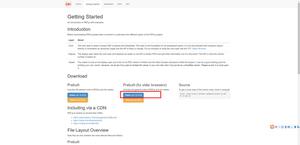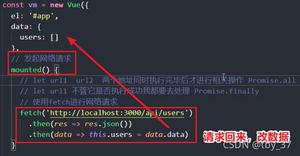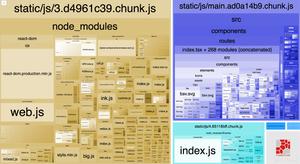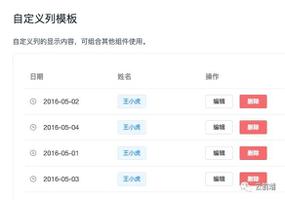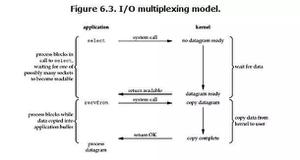Vue.js响应式原理
一、创建一个vue应用
new vue({data() {
return {
name: 'yjh',
};
},
router,
store,
render: h => h(App),
}).$mount('#app');
二、实例化一个Vue应用到底发生了什么?
- this._init()
- callHook(vm, 'beforeCreate')
- observe(vm._data)
vm._data = vm.$options.data()proxy(vm, _data, key) 代理到vm上访问
function proxy(vm, _data, key)() {Object.defineProperty(target, key, {
get() {
return vm._data.key
},
set(val) {
vm._data.key = val
}
})
}
- callHook(vm, 'created')
- mountComponent(vm.$mount执行后执行mountComponent)
- callHook(vm, 'beforeMount')
- new Watcher(vm, updateComponent)
const updateComponent = () => {// 创建虚拟dom
const vnode = vm._render()
// 创建虚拟dom的过程等同于如下代码行
// const vnode = vm.$options.render.call(vm, vm.$createElement)
// 更新$el
vm._update(vnode)
}
- callHook(vm, 'mount')
在以上发生的行为当中,第3步与第7步两者相辅相成;也是我们最需要关心的,弄清楚这两者,vue响应式原理就基本掌握了
三、如何追踪数据变化
我们都知道 数据发生变化视图也随之更新,那么首先我们得知道如何监听数据的变化
class Observer {constructor(value) {
this.value = value
this.walk(value)
}
walk(obj) {
const keys = Object.keys(obj)
for (let i = 0; i < keys.length; i++) {
definereactive(obj, keys[i])
}
}
}
function definereactive(obj, key) {
Object.defineProperty(obj, key, {
get() {
// 数据被访问
return obj.key
},
set(val) {
if (val === obj.key) {
return
}
// 数据更新了
obj.key = val
}
})
}
四、定义一个发布订阅的Dep类
当我们在创建虚拟dom的过程中,也就是执行vm.$createElement方法,可能会在多个地方使用到同一个数据字段(如:vm.name),即多个订阅者订阅了name的更新,因此在Vue中定义了一个发布订阅的Dep类
class Dep {constructor() {
this.subs = []
}
addSub(sub) {
this.subs.push(sub)
}
depend() {
if (Dep.target) {
this.addSub(Dep.target)
}
}
notify() {
this.subs.forEach(sub => sub.update())
}
removeSub(sub) {
const i = this.subs.findIndex(sub)
if (i > -1) {
this.subs.splice(i, 1)
}
}
}
五、数据订阅者
订阅数据更新的到底是谁,我们先看看如下场景
<!-- 场景1 --><div>名字:{{ userInfo.name }},全名:{{ fullName }}</div>
export default {data() {
return {
userInfo: {
name: 'junhua',
},
}
},
mounted() {
// 场景2
this.$watch('name', (newVal, val) => {
// ...
})
},
// 场景2
watch: {
name(newVal, val) {
// ...
}
},
computed() {
// 场景3
fullName() {
return `yang${this.userInfo.name}`
}
}
}
从上面示例代码看,订阅数据更新的场景有:
- 模版插值 :new Watcher(vm, updateComponent)数据发生变化,更新组件
- vm.$watch : 监听单个数据做一些逻辑操作
- computed使用场景:计算属性
因此数据订阅者包含一个参数expOrFn([Function|String]),数据更新后需要执行的callback,如下:
class Watcher {constructor(vm, expOrFn, cb) {
this.vm = vm
if (typeof expOrFn === 'function') {
this.getter = expOrFn
} else {
this.getter = parsePath(expOrFn)
}
this.cb = cb || () => {}
this.value = this.get()
}
get() {
Dep.target = this
const value = this.getter.call(this.vm, this.vm)
Dep.target = undefined
return value
}
update() {
const val = this.value
const newVal = this.get()
this.cb.call(this.vm, newVal, val)
}
}
资源搜索网站大全 https://www.renrenfan.com.cn广州VI设计公司https://www.houdianzi.com
六、最终的观察者Observer
class Observer {constructor(value) {
this.value = value
this.walk(value)
}
walk(obj) {
const keys = Object.keys(obj)
for (let i = 0; i < keys.length; i++) {
defineReactive(obj, keys[i],)
}
}
}
function defineReactive(obj, key) {
const dep = new Dep()
Object.defineProperty(obj, key, {
get() {
// 依赖收集,收集订阅者Watcher实例
dep.depend()
// 数据被访问
return obj.key
},
set(val) {
if (val === obj.key) {
return
}
// 数据更新了
obj.key = val
// 通知订阅者Watcher实例更新
dep.notify()
}
})
}
七、总结
我们再来回顾下实例化Vue应用的最重要的两点
observe(vm._data)// vm.$mount()
const componentUpdateWatcher = new Watcher(vm, updateComponent)
updateComponent在更新渲染组件时,会访问1或多个数据模版插值,当访问数据时,将通过getter拦截器把componentUpdateWatcher作为订阅者添加到多个依赖中,每当其中一个数据有更新,将执行setter函数,对应的依赖将会通知订阅者componentUpdateWatcher执行update,即执行updateComponent;至此Vue数据响应式目的已达到,再来看官网的这张图片就很好理解了
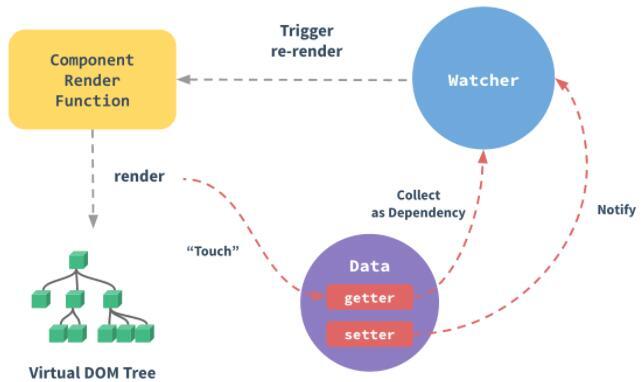
以上是 Vue.js响应式原理 的全部内容, 来源链接: utcz.com/a/74114.html

